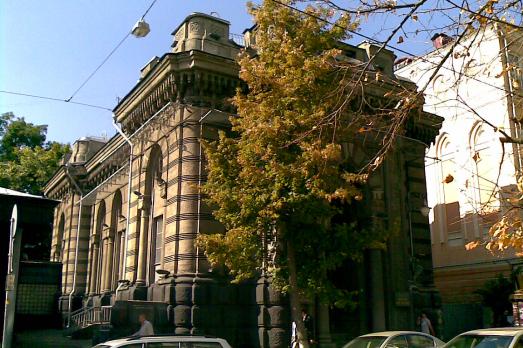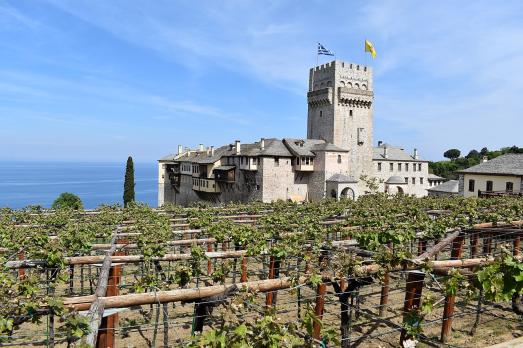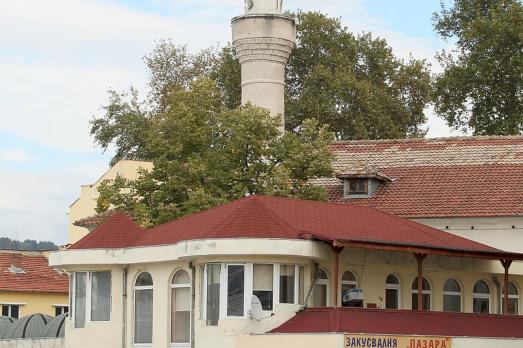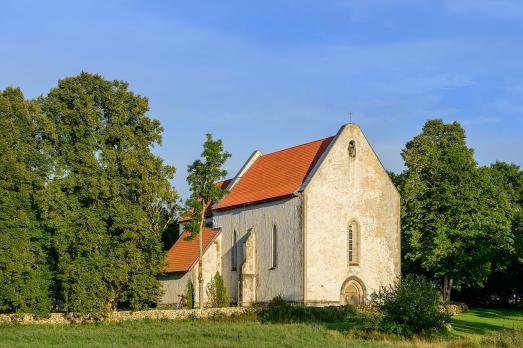
Karaite Kenessa in Istanbul
Hasköy/ Istanbul, TR
The Karaite Kenessa in Istanbul was built in the first half of the 19th century. I was rebuilt in 1918. This stone building still serves as a synagogue.
Here you can search for a building to visit. You can use the map find destinations, or you can use the filters to search for a building based upon what different criteria.

Hasköy/ Istanbul, TR
The Karaite Kenessa in Istanbul was built in the first half of the 19th century. I was rebuilt in 1918. This stone building still serves as a synagogue.

Trakai, LT
The Karaite Kenessa in Trakai is a 19th century Karaite synagogue. The wooden Baroque building still serves as a synagogue.

Vilnius, LT
The Karaite Kenessa in Vilnius is a synagogue built in 1908 by architect Mikhail M. Prozorov for a Karaite community. The brick Neo-Moorish building still serves as a synagogue.

Kyiv, UA
The Karaite Synagogue is a former synagogue built between 1898 and 1902 by the architect Vladislav Gorodetsky. The building is distinguished by its luxurious Moorish and Arabic decoration. The synagogue was intended for Kiev's Karaite community (about 300 people at the time) but was closed shortly afterwards under the Soviet regime. Since 1981, the House of Republican Actors has been housed there.

Agio Oros, GR
Karakalou Monastery is one of the 20 Eastern Orthodox monasteries in Mount Athos. It is ranked eleventh in the Athonite, the hierarchical order of the twenty monasteries on the Athos peninsula.

Karasjohka Karasjok, NO
The new church in Karasjok was built in 1974 when the old church across the river Karasjok had become too small. The church, which was designed by the architects Østbye, Kleven and Almaas, is built of wooden posts with exterior and interior cladding of standing panels.

Mostar, BA
The Karađoz Bey Mosque was built between 1557 and 1558 according to the plans of the famous Ottoman architect Mimar Sinan. It suffered serious damage during the war in Bosnia and Herzegovina, but was rebuilt and reopened in 2004.

Kardzhali, BG
Close to the town's market, the wooden mosque can accommodate up to 500 worshipers. It consists of a gathering hall, a minaret, and an administrative building.

Karesuando, SE
The Karesuando Church is a wooden church building in the North of Sweden, at the border with Finland. The church is the northernmost church of the country. The church was built in 1816 after Sweden lost the war with Russia. Borders were remarked and the main town of Markkina became Finnish. This meant that Sweden needed a new principal town and parish and Karuesando was chosen. The church was replaced in 1905 and restored to its present state in 1954.

Linnaka, EE
The church of Karja was built in the fourth quarter of the 13th or early 14th century by masters from Ojamaa (Gotland). Even before the construction of the stone church, already in 1254, there was a wooden church in Karja. Until 1896 the clergy was composed of Baltic Germans. The first Estonian clergyman was Karl Wöhrmann in 1896-1926.

new
The Chassidic Route is a cultural and historical trail tracing the rich legacy of Jewish communities in southeastern Poland and western Ukraine. This region was central to the rise of Chassidism in the 18th century. Here, we highlight 10 remarkable synagogues you’ll discover along this route.

he cradle of the Industrial Revolution in Germany, Chemnitz, is well-known for its industrial heritage landscape, but the city is also home to remarkable examples of religious architecture from different historical periods. Join us as we explore the key landmarks of this European Capital of Culture 2025.

The twin towns of Nova Gorica (Slovenia) and Gorizia (Italy), lying on the border between the two countries, have a rich religious heritage, steeped in centuries of tradition. If you are looking for ideas for your visit, take note of these 10 religious sites that you should not miss.